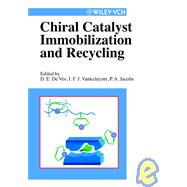Homogeneous asymmetric catalysis offers reliable results and the possibility to 'tune' the catalysis on a rational basis. A pitfall, however, is that the separation of the catalyst from the starting material and products is difficult and often results in the loss of the catalytic material.
Immobilization offers a potential solution for the user of enantioselective catalysts in industrial processes and laboratories. Heterogeneous catalysis allows continuous operations, recycling of the catalyst, and an easy separation of the reaction products, reducing both waste and costs.
Chemists in academia and industry will welcome this careful selection of topics in this handbook that provides readers with practical and detailed information about the technical requirements for the immobilization of chiral catalysts, their application in synthesis, and methods for recycling.








